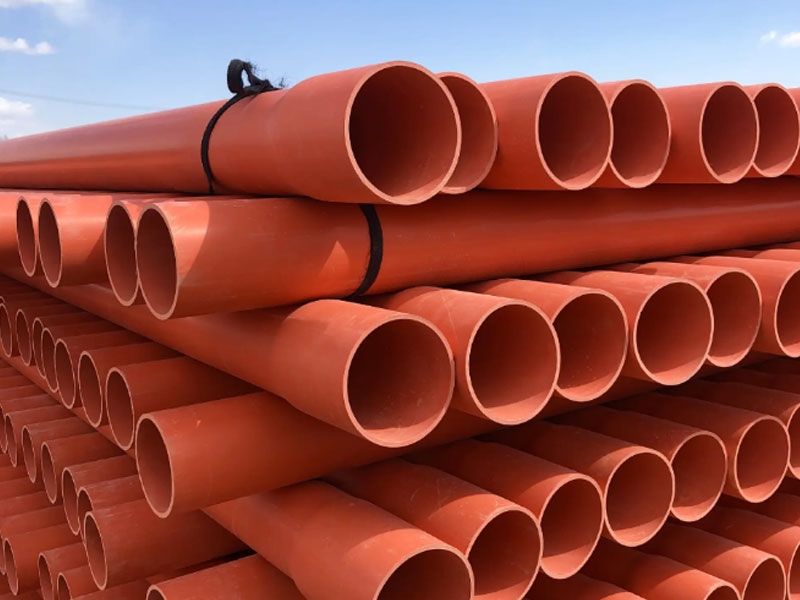
Product features
1. Material characteristics
CPVC power pipes are mainly made of PVC-C resin with excellent heat resistance and insulation performance. CPVC products are currently green and environmentally friendly products, and their excellent physical and chemical properties are increasingly valued by the industry.
CPVC power pipe is a hard straight solid wall pipe, with smooth and flat inner and outer walls, and a bright and eye-catching orange red color.
2. Heat resistance performance
CPVC power pipes have a heat resistance temperature increase of 15 ℃ compared to ordinary UPVC double wall corrugated pipes. They can maintain deformation in environments above 93 ℃ and have sufficient strength.
3. Insulation performance
CPVC power pipes can withstand high voltages of over 30000 volts.
4. Compressive performance
After material modification, the CPVC power pipe has achieved a ring stiffness of 10kpa, which is significantly higher than the regulations of relevant national departments for buried plastic pipes, where the ring stiffness should be above 8kpa.
5. High impact strength
CPVC power pipes can withstand an impact force of 1kg and a height of 2m at a temperature of 0 ℃, fully reflecting that the low-temperature impact performance of this material is fully suitable for the requirements of construction environmental conditions.
6. Flame retardant performance
Both PVC and PVC-C materials have good flame retardant properties and can extinguish immediately after ignition. Especially for PVC-C materials, due to their significantly higher chlorine content than PVC, their flame retardancy and smoke density index are significantly improved.
7. Installation performance
CPVC power pipes are lightweight, high-strength, and have a simple construction and laying method. They can be excavated and buried at night, backfilled on the road surface, and opened to traffic as usual during the day; Adopting elastic sealing rubber ring socket connection, the installation and connection are convenient and fast, with good sealing performance, which can prevent groundwater leakage and effectively protect the safety of power cable use.
8. Long service life
CPVC power pipe material is corrosion resistant, anti-aging and has a service life of more than 50 years.
Installation Guide
(1) CPVC power pipe laying and installation
1. CPVC power conduit standard fixed length (6 meters) is equipped with 3 sets of pipe sleepers, with a spacing of 2.0m between pipe sleepers and a distance of 0.5m from the joint.
2. The installation of CPVC power protective casing can be done manually, and the pipe material can be transferred to the construction personnel at the bottom of the trench by ground personnel. It is strictly prohibited to roll the pipe into the groove.
3. The adjustment of the length of CPVC power protective casing can be done by cutting with mechanical tools. The cut at the cutting point should be perpendicular to the axis of the pipe pillow and should be smooth and flat.
(2) CPVC power sheath connection
1. The connection of CPVC power protective casing adopts socket or interface connection.
2. The surface of the CPVC power conduit connection should be marked with an indication of the insertion length. After the pipe is inserted into the socket, it is necessary to ensure that the insertion indication is accurate and in place.
3. Before connecting the CPVC power protective sleeve, soil or other attachments should be removed from the outside of the pipe socket and the inside of the rubber ring to facilitate connection and prevent water leakage.
(3) Backfill soil
1. The trench backfilling should be carried out after the acceptance of the concealed pipeline project, and the backfilling should be done in a timely manner to prevent losses caused by prolonged exposure of the pipeline.
2. The surrounding area of CPVC power protective casing must be backfilled with soft soil.
3. Backfilling soil should be manually filled into the ditch, and mechanical backfilling is strictly prohibited.
4. The quality of backfill soil must meet the density requirements specified in the design.



